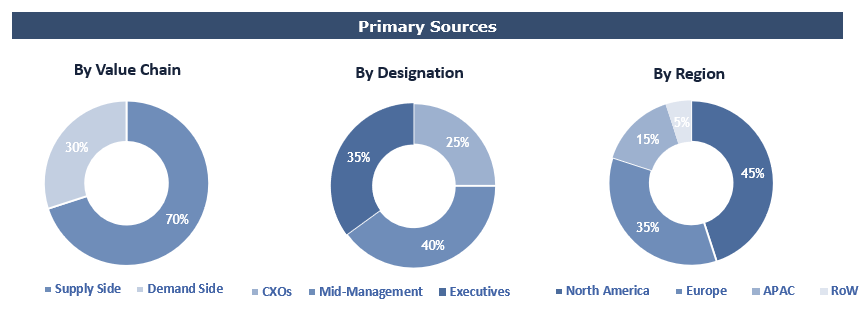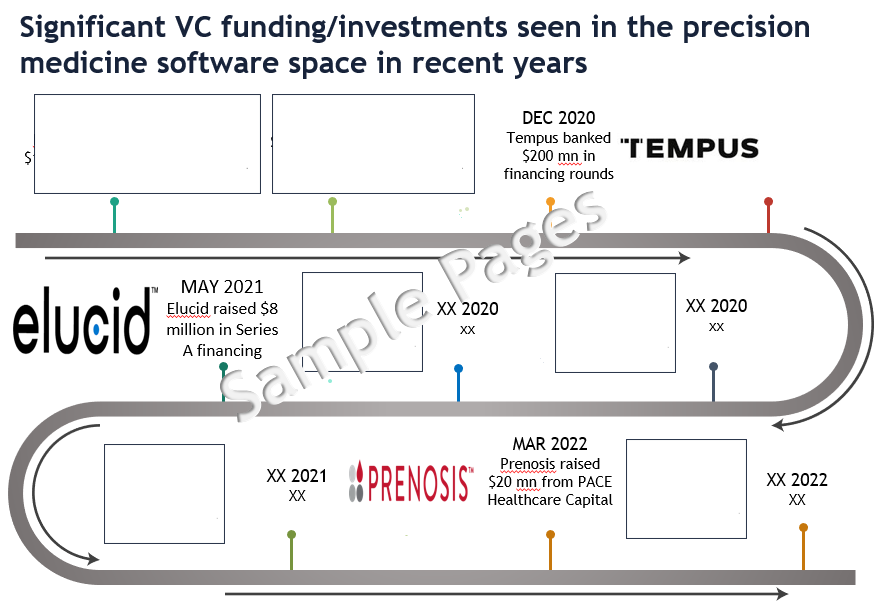
Global Precision Medicine Software Market Size, Share, Trend, Growth & Demand 2026
The global precision medicine software market is anticipated to witness a CAGR of 10% by 2026, driven by the growing research in the segment of genomics/precision medicine, significant VC funding, rising government support, and the rapid move towards personalized treatments.
Precision medicine, sometimes known as "personalized medicine" is an innovative approach to tailoring disease prevention and treatment based on the individual’s unique characteristics and genetic make-up. Precision medicine software (platforms, data-sharing networks, clinical decision support software, AI-enabled, etc.) provides the healthcare/life sciences community with integrated data and data-driven insights to strengthen their precision medicine program.
The Shift from the Dominant One-Size-Fits-All Approach to Personalized Care
The precision medicine approach promises better clinical outcomes, safer medicines, and less wastage/cost savings. With the increasing demand to provide value to healthcare systems, drug developers have started to move away from the traditional one-size-fits-all approach to the personalized care approach.
In 2020, the FDA approved 20 personalized drugs and biologics (39% of the new approvals). Precision medicines accounted for a quarter or more of all new drugs approved by the FDA each year in the past five years. With the growing interest and increasing opportunities in precision medicine, the demand for precision medicine software is also anticipated to grow.
Favorable Government Initiatives
Realizing the long-term benefits of personalized care in improving population health and reducing healthcare costs, governments across the globe are supporting advanced treatments like precision medicine through initiatives, regulatory changes, and/or funding research. For instance, in the US, The Oncology Care Model, a specialty payment and delivery model developed by the CMS Innovation Center is providing incentives that have led to a surge of large community provider networks implementing precision medicine initiatives. Some of the other programs to advance the research/use of precision medicine include The Precision Medicine Initiative (PMI), All of Us Research Program, precisionFDA, and Million Veteran Program. In addition, FDA issued seven guidance documents in 2020 related to precision medicine. All these efforts would eventually boost the demand for precision medicine software.
Vast Growth Opportunities in Oncology
Precision medicine holds great promise for reshaping the way cancer is treated. The increasing prevalence of cancer and growing funding for cancer research would propel the adoption of precision medicine in oncology. High-quality patient datasets are the foundation to bring precision oncology into clinical practice. Thus, providing great opportunities for precision oncology software providers. Some of the recent activities in this space include:
- In Apr 2022, BostonGene, a precision cancer software start-up raised $150 million Series B funding.
- In Nov 2021, GE Healthcare announced collaborations with SOPHiA GENETICS, The University of Cambridge and Optellum as part of its vision to advance care, make precision health more accessible, and ultimately improve outcomes for cancer patients.
- In Feb 2021, Synapse, a provider of software to support precision oncology care and drug discovery closed a $68 million growth equity investment round to expand in RWE-driven precision medicine.
Key Challenges in Precision Medicine Software Market
For the emergence of precision medicine in every disease area, the industry needs to know how to optimize the use of big data with the increase in the amount of genomics, health, and lifestyle information.
Further, the high cost of deployment, issues related to the secure storage of large volumes of sequenced data, lack of reimbursement for precision medicine-based treatments, and the shortage of expert technicians/bioinformaticians are some of the key challenges faced in precision medicine software market.
Competitive Landscape Analysis: Precision Medicine Software Market
The global precision medicine software market is highly competitive and fragmented. Some of the key/promising players in this market include Syapse, Fabric Genomics, Sophia Genetics, 2bprecise, PierianDx, Inc., PhenoTips, Foundation Medicine, Inc., GenomOncology, LLC, Translational Software, Inc., LifeOmic Health, LLC, Sunquest Information Systems, Inc., Tempus, Human Longevity, Inc., and N-of-One Inc.
Key Strategic Questions Addressed
- What is the market size & forecast of the Precision Medicine Software market?
- What are the historical, present, and forecasted market shares and growth rates of various segments and sub-segments of the Precision Medicine Software market?
- How has Covid impacted the Precision Medicine Software market?
- What are the major growth drivers, restraints/and challenges impacting the market?
- What are the opportunities prevailing in the market?
- Which region has the highest share in the global market? Which region is expected to witness the highest growth rate in the next 5 years?
- Who are the major players operating in the market? What is the competitive positioning of key players?
- What are the key strategies adopted by players in Precision Medicine Software Market?
The study has been compiled based on the extensive primary and secondary research.
Secondary Research (Indicative List)

Primary Research
To validate research findings (market size & forecasts, market segmentation, market dynamics, competitive landscape, key industry trends, etc.), extensive primary interviews were conducted with both supply and demand side stakeholders.
Supply Side Stakeholders:
- Senior Management Level: CEOs, Presidents, Vice-Presidents, Directors, Chief Technology Officers, Chief Commercial Officers
- Mid-Management Level: Product Managers, Sales Managers, Brand Managers, R&D Managers, Business Development Managers, Consultants
Demand Side Stakeholders:
- Stakeholders in Pharma, Biotech, Healthcare, Diagnostic Labs, CROs & Other End Users.
Breakdown of Primary Interviews

Market Size Estimation
Both ‘Top-Down and Bottom-Up Approaches’ were used to derive market size estimates and forecasts.
Data Triangulation
Research findings derived through secondary sources & internal analysis was validated with Primary Interviews, Internal Knowledge Repository and Company’s Sales Data.



